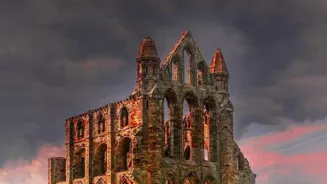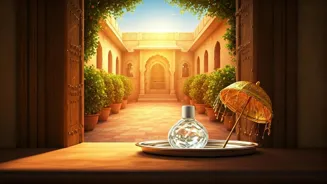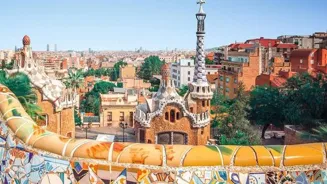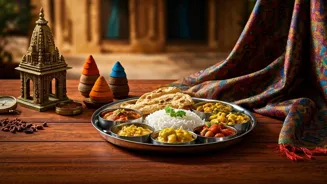Discover India's Cultural Heritage: Explore 10 Iconic Monuments! Embark on a journey through India's vibrant history and diverse cultures as we delve into the stories behind 10 must-visit iconic monuments.
From the eternal love symbolized by the Taj Mahal to the architectural prowess of the Red Fort and Qutub Minar, each site whispers tales of emperors and artisans who
India, a land of vibrant colours, diverse cultures, and a rich history, boasts a plethora of monuments that stand as testaments to its glorious past.
These architectural marvels are not just structures of stone and brick; they are storytellers, whispering tales of emperors, artists, and artisans who shaped the nation we know today. Embark on a journey of cultural appreciation as we explore 10 iconic monuments you absolutely must visit in India:
The Taj Mahal: Symbol of love and architectural marvel
The Taj Mahal, a UNESCO World Heritage Site, is the epitome of love and architectural brilliance. Built by Mughal Emperor Shah Jahan in memory of his beloved wife Mumtaz Mahal, this ivory-white marble mausoleum is a sight to behold.
The intricate carvings, the symmetrical design, and the sheer grandeur of the Taj Mahal leave visitors spellbound. A visit during sunrise or sunset offers breathtaking views as the marble reflects the changing hues of the sky.
Don’t miss the chance to stroll through the Mughal gardens surrounding the monument, adding to the serene experience. The Taj Mahal is not just a monument; it’s a symbol of eternal love and a masterpiece of Mughal architecture. The detailed work of the craftsman is beautiful.
The Yamuna river nearby adds to its beauty. The monument is an important site in India which attracts many tourists and locals as well. The monument is a must visit at least once in a lifetime.
The Red Fort in Delhi: historic Mughal residence with rich heritage and symbolic importance
The Red Fort, also known as Lal Qila, is a historic fort in Delhi that served as the main residence of the Mughal emperors. Constructed by Shah Jahan in the 17th century, this imposing red sandstone structure is a symbol of Mughal power and architectural prowess.

Explore the Diwan-i-Aam (Hall of Public Audience), the Diwan-i-Khas (Hall of Private Audience), and the Rang Mahal (Palace of Colors) to get a glimpse into the opulent lives of the Mughal rulers. The Red Fort also houses a museum that showcases Mughal artifacts and historical documents.
Every year, on Independence Day, the Prime Minister of India hoists the national flag at the Red Fort, making it a significant landmark in the country.
Qutub Minar: 12th-century UNESCO site in Delhi with rich history and panoramic views
The Qutub Minar, a UNESCO World Heritage Site, is a soaring minaret built in the 12th century by Qutb-ud-din Aibak. This towering structure, made of red sandstone and marble, is an example of Indo-Islamic architecture. Climb to the top of the minaret (if allowed) for panoramic views of Delhi.
The Qutub Minar complex also includes other historical structures, such as the Quwwat-ul-Islam Mosque and the Iron Pillar, which has remained rust-free for over 1600 years. Explore the complex to discover the rich history and architectural heritage of the Delhi Sultanate.
The surrounding gardens are also worth visiting. The monument is a popular spot among families and tourists.
Hawa Mahal: iconic pink sandstone palace with 953 windows for royal women
The Hawa Mahal, also known as the "Palace of Winds," is a distinctive pink sandstone structure in Jaipur. Built by Maharaja Sawai Pratap Singh in the 18th century, this five-story palace features a facade adorned with 953 small windows, or "jharokhas.
" These windows allowed the royal women to observe street festivals and daily life without being seen. The Hawa Mahal is a masterpiece of Rajput architecture and a symbol of Jaipur's rich cultural heritage.
Capture stunning photographs of the palace from the street or climb to the top for panoramic views of the city. The construction of the building is very interesting. Tourist are generally very fascinated by the construction.
The Victoria Memorial in Kolkata: A tribute to Queen Victoria, showcasing British India's history
The Victoria Memorial, a grand white marble building in Kolkata, is a tribute to Queen Victoria of England. Built in the early 20th century, this magnificent structure houses a museum that showcases artifacts and exhibits related to British India.
Explore the museum's galleries to learn about the history of the British Raj and the lives of prominent figures from that era. The Victoria Memorial is a symbol of Kolkata's colonial past and a reminder of the city's connection to the British Empire.
The gardens around the memorial are beautifully maintained. Families and couples prefer this romantic place to spend time at. This is a good place to learn about history.
The Gateway of India, a monumental archway overlooking the Arabian Sea, is an iconic landmark in Mumbai. Built in the early 20th century to commemorate the visit of King George V and Queen Mary to India, this imposing structure is a symbol of Mumbai's colonial past and its status as a major port city. Take a boat ride from the Gateway of India to explore the Elephanta Caves, another UNESCO World Heritage Site. The Gateway of India is a popular gathering place for locals and tourists alike, and it offers stunning views of the Mumbai skyline and the Arabian Sea. It is also a place of historical importanc and architectural beauty.
India's monuments are not just relics of the past; they are living embodiments of the country's rich cultural heritage. Each monument tells a unique story, offering insights into the lives, beliefs, and artistic achievements of the people who built them.
By visiting these iconic sites, you not only appreciate the architectural beauty but also connect with the history and culture of India. So, plan your trip and explore these ten iconic monuments to embark on a journey of cultural appreciation!
Always make sure to be respectful towards these historic monuments by not writing any names or graffiti. These places are part of the heritage and must be maintained well for future generations.
Visiting these monuments should be less as a tour, and more as a journey to understanding our history.
India is a diverse land, and the monuments here are the epitome of art and culture. The monuments represent the different eras that spanned throughout India's long history. They are a beacon of the cultural prowess that India has always possessed. They are a perfect blend of both art and precision.
Be it the Taj Mahal or the Red Fort, each monument has a story to tell. These are also an engineering marvel, they have managed to stand the test of time, natural calamities, and other issues for centuries.
They attract tourists from around the globe, and are a source of revenue as well as employment for many local citizens.
There is a lot to learn from visiting these monuments. Each monument has different architecture according to the era in which it was built.
The different rulers of that era have impacted the architecture in different ways. The Mughals bought persian style of architecture to India. The Britishers bought european style of architecture to India. The Indian kings had their own style of architecture in India.
These architectural styles together form the identity of these monuments. These monuments are a sight to behold. Tourists are generally interested in learning about the history of the place and also fascinated by the architectural brilliance of the construction.
These monuments are not just structures, they are a testament to the artistic skills of the artisans of that time. The intricate carvings, the delicate designs, and the overall craftsmanship are a reflection of the talent and dedication of the people who built these monuments.
These monuments are not only beautiful but also very strong. They have survived for centuries, standing tall against the elements and the test of time. Preserving these monuments is a responsibility to the country. These serve as a window into the past.
Ensure that these monuments survive for future generations.
AI Generated Content. Glance/InMobi shall have no liability for the content









